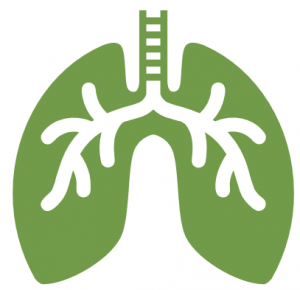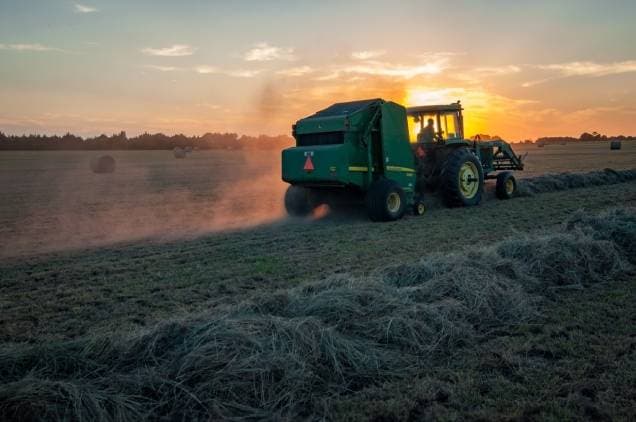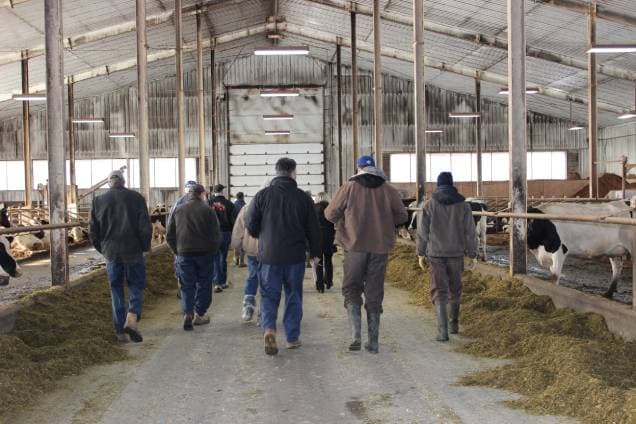 When working on farm, there can be dust, mist, fumes and other gases that can cause permanent damage to the respiratory system if the worker is not protected from these sometimes-invisible hazards. Wearing the correct mask or respirator can allow a worker a lifetime of breathing easy and avoiding permanent lung damage.
When working on farm, there can be dust, mist, fumes and other gases that can cause permanent damage to the respiratory system if the worker is not protected from these sometimes-invisible hazards. Wearing the correct mask or respirator can allow a worker a lifetime of breathing easy and avoiding permanent lung damage.
Workers not wearing the correct PPE for the hazard can be susceptible to respiratory illness such as asthma, farmers lung, chronic obstructive pulmonary disease (COPD), allergies, rhinitis, and other illnesses that interrupt the proper function of the lungs making it difficult to breathe. These conditions can be caused by dust, mould, pesticides, chemicals, and gases found on the farm.
Respiratory Illness Prevention:
Conduct a hazard and risk assessment on farm to determine the potential sources of respiratory illness. Eliminate or substitute chemicals and pesticides for those less toxic, rid of sources of mould and dust and prevent the build up of gases, where possible. Add warning signs to identify areas of risk and post hazard control requirements for those areas. Ensure to post PPE requirements where elimination, engineering, and administrative controls are inadequate in controlling the hazard.
Potential Sources of Respiratory Illness:
Dusts and Mould:
- Areas that cannot be ventilated should be enclosed.
- Increase ventilation rates and ensure ventilation systems meet the requirements to give enough air exchange to prevent air borne contaminants resting in the air and being inhaled by workers.
- Self-propelled equipment should have enclosed cabs with air filters. Clean filters regularly.
- Work at slower speeds when operating equipment to reduce the dust, and other air borne contaminants.

- Use feed products that reduce the amount of dust & fungi generated while feeding.
- Clean tools, equipment and machines with water or liquid to prevent the aerosolization of dry material.
- When working outdoors, maintain a position upwind from airborne contaminants.
- Remove indoor dust as often as possible using a system with water or similar to keep dust from aerosolizing while cleaning.
- Storage and processing areas for grain and feed are enclosed and sealed.
- Store harvested crops dry with 14% moisture content.
- Do other chores before feeding animals to limit the time in airborne contaminants such as after distributing silage or chopped feed.
Gases
Nitrogen Oxide in Silos: Add signs outside of silos to warn of the danger, do not enter a silo for 2-3 weeks after filling it and run the blowers for 30 minutes or more before entering.
Carbon monoxide: Ventilate buildings where engines are running, and ensure all equipment is maintained.
Manure Pit Gases
Methane (CH4): An odorless gas that is lighter than air. Like CO2, it acts as an asphyxiant, but is explosive.
Hydrogen Sulfide (H2S): A by-product of manure decomposition, that is heavier than air and smells like rotten eggs. Ensure a gas trap is between the buildings and outside storage and direct airflow towards the floor to prevent workers from inhaling dust and gases. Inhalation can cause death.
Carbon Dioxide (CO2): A by-product of manure decomposition and fermentation and is heavier than air but is difficult to detect. It causes shortness of breath and dizziness and, at high concentrations, cause death.
Ammonia: Do not enter manure pits during agitation. Exhaust air through manure channels, and use tight fitting hatches, water traps or evacuation fans.
Chemicals, Fertilizers, & Pesticides

- Read labels and safety data sheets that come with the product.
- Contact the manufacturer for additional information about products.
- Inspect and maintain sprayers to prevent seeping or leaking of chemicals.
Always use PPE that is recommended by the safety data sheet or label. Masks or respirators may be required. There are two types of air-purifying respirators (CSA-Z94.4-18), which can be used in environments with a high concentration of dust, pesticides or chemicals, and may not be suitable for oxygen deficient atmospheres. Use air-supplied respirators in oxygen deficient work areas (CSA Standard Z180.1-00: Compressed Breathing Air and Systems).
Check with your supplier for the right mask for the hazard and ensure fit testing (CSA Standard Z94.4-02, Selection, Care and Use of Respirators) is performed initially and at least every two years thereafter. Ensure the mask meets the CSA standard required by OHS legislation. Follow the care, use, cleaning and storage instructions to keep masks in a condition to perform the function for which it was intended.
Final Note
Inhalation of airborne contaminants may cause breathing issues and lung problems in both the long and short term. The more often a worker is exposed to these contaminants, the greater the risk of them developing a long-term illness. Respirators are very effective at removing the risk of exposure, but you must have the right kind and use it the way it was intended by the manufacturer.
Visit the Farm Safety Nova Scotia website to download a template for a respiratory code of practice, respiratory instruction sheet and a respiratory inspection checklist.



